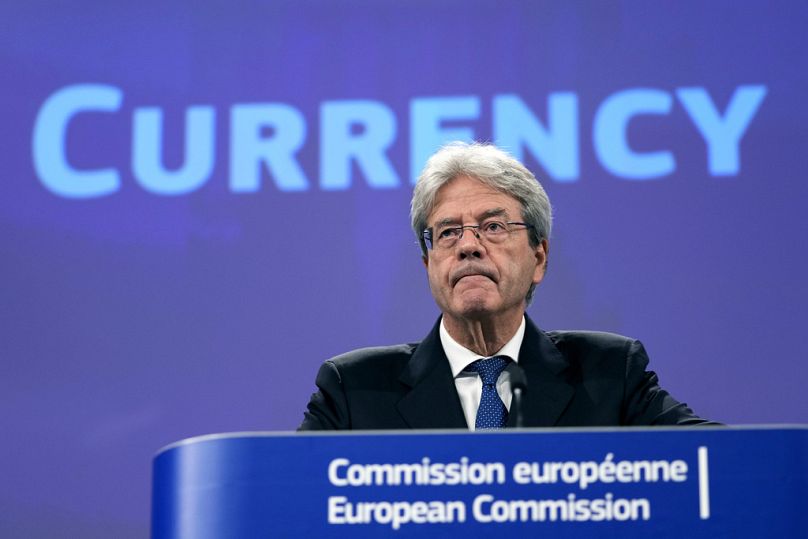The unfolding CBDC narrative of 2024 continues to not just redefine the future of crypto; it's actively shaping the very fabric of Europe's economic identity, Jón Egilsson writes.
In 2023, a most interesting divergence was revealed as European central banks publicly grappled with crucial Central Bank Digital Currency (CBDC) choices: retail versus wholesale.
While these options may seem fairly benign to the average citizen, the European Central Bank (ECB), along with the Bank of England (BoE) and the Swiss National Bank (SNB), announced critical and revealing design preferences.
The choice between retail and wholesale CBDCs echoes vastly different worldviews on societal governance and value systems.
The BoE and SNB lean towards a synthetic model, blending innovation with traditional financial stability, while the ECB finds an unlikely companion in China, embracing a retail CBDC — a digital euro designed in similar ways to China's digital yuan.
This divergence in strategies not only reflects differing societal values but also sets the stage for a competitive shake-up in the European financial sector in 2024 and beyond.
As the ECB faces scrutiny over its retail CBDC approach, there are concerns that it may disrupt market dynamics and Western core economic principles. The CBDC design is more than a financial saga and there are crucial differences for each path.
What's behind a synthetic CBDC?
In 2023, BoE and the SNB revealed an inclination toward a synthetic CBDC (sCBDC) approach.
First termed by Tobias Adrian and Tommaso Mancini-Griffoli of the International Monetary Fund in 2019, sCBDC aims to foster innovation and growth by granting licensed private e-money issuers access to central bank reserves, for them to back customer-safeguarded funds with riskless public money.
This design outsources operation and management to private entities, yet offers the public indirect access to central bank money.
It offers the security of central bank money, yet frees central banks from servicing retail customers.
This mitigates inherent operational risks for central banks and avoids conflicts of interest, while at the same time promoting innovation and growth driven by competition.
This approach has also been suggested by prominent US scholars and recently in a paper from the Bank of International Settlement (BIS).
The road to serfdom paved with good intentions
In stark contrast to its non-EU counterparts, the European Central Bank (ECB) unveiled its CBDC plans in November 2023 to introduce a retail Central Bank Digital Currency (CBDC), aligning its strategy with the Chinese approach for a retail CBDC.
According to the ECB, this digital euro is envisioned as "an electronic means of payment available free of charge to everyone."
Proponents argue that this move aims to make public money readily accessible for digital payments over the next few years, enhancing convenience and fostering healthy competition within the European payments sector.
However, one cannot help but recall the cautionary words of Friedrich Hayek: "The road to serfdom is paved with good intentions." While the ECB's officially declared goals seem benevolent, the potential consequences and broader implications warrant careful consideration.
The ECB’s plans for a retail CBDC have prompted criticism and distrust from the public and lawmakers.
However, ECB’s President Christine Lagarde's dismissive stance towards concerns — expressing the need to “address all the conspiracy theories” — underscores a potential lack of foresight into the broader implications.
While the digital euro project has been compared with China's digital yuan project and Beijing's potential interest in increasing control over its citizens, the larger issue is how a retail CBDC challenges fundamental Western values regarding the role of public institutions in a market economy.
Europe at a crossroads
While healthy market competition is recognized, in most Western societies, as a catalyst for innovation and economic growth, the prospect of an unlevel playing field, discriminatory privileges, and potential anti-competitive behaviour poses significant threats to European innovation and economic growth needed to support a digital euro competing on the global stage.
What is being proposed is essentially, a central bank, armed with a monopoly on money creation and extensive regulatory powers over its competitors. It intends to enter the payment market with a "free" solution.
This sets the stage for a direct challenge to the private sector — a competition where the rules, regulations, fines, licenses, and market access are determined by the very entity entering the competition.
As we move into 2024, Europe now stands at a crossroads, and the choice between retail and synthetic CBDCs is not just a financial matter — it's a philosophical reflection on the role of competition, innovation, and public institutions in shaping the future of money.
As the continent navigates this uncharted terrain, a sCBDC invites a nuanced approach, balancing the trade-offs and fostering an ecosystem where public and private sectors collaborate for a resilient and innovative European monetary future.
The unfolding CBDC narrative of 2024 continues to not just redefine the future of crypto; it's actively shaping the very fabric of Europe's economic identity.
Jón Egilsson is co-founder and chairman of Monerium. Before this, he served as the vice chairman and chairman of the Icelandic Central Bank's supervisory board from 2013 to 2017.
At Euronews, we believe all views matter. Contact us at view@euronews.com to send pitches or submissions and be part of the conversation.














